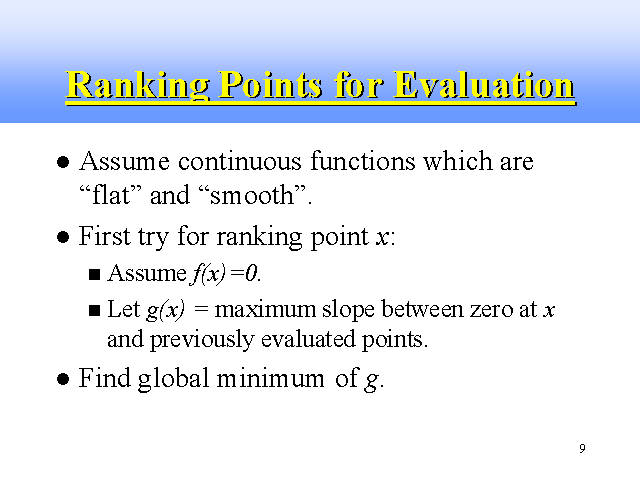Slide 10 of 23
Notes:
We now turn to the specific assumptions of my initial implementation. Keep in mind, though, that this is a general approach and different assumptions may be employed as is computationally beneficial.
At the core of this heuristic ranking is a "flatness" or "smoothness" assumption that unevaluated points are (1) more likely to be close in value to neighboring evaluated points, and (2) have more uncertainty in their value the more distant they are from evaluated points. Then the most likely zero is roughly the unevaluated point which, when assumed to be zero, forces the minimum slope between it and previously evaluated points.
So, a simple first attempt at a ranking function g might then be to let g(x) be the maximum slope between a zero at x and previously evaluated points. We then wish to evaluate f(x) for the x which minimizes g. So in a simple decision procedure, we sample values of g(x) and evaluate the x which minimizes g.
However, there is a problem with this approach....

















